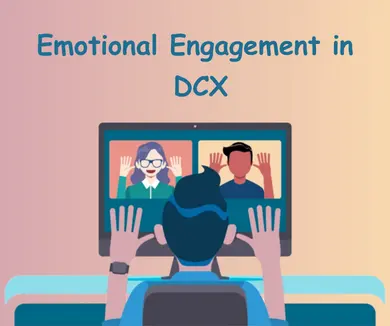Introduction
In the world of customer experience (CX), where technology and automation often take center stage, one important element often gets overlooked: emotional engagement. Deepening the connection between a brand and its customer goes beyond transactional interactions. It delves into emotional territory and builds relationships that stand the test of time.
The Digital Transformation of Emotions
Emotions have always played a fundamental role in customer experience. However, with the digital age, the way emotions are expressed and experienced has shifted dramatically. Instead of face-to-face interactions, customers now interact with brands through screens and devices. This shift has opened up new possibilities for brands to connect with their audience emotionally.
The Power of Emotional Engagement
Why should brands care about emotional engagement? It’s simple: emotions drive decisions. Studies have shown that emotions are the primary driver behind consumer behavior. When customers feel a strong emotional connection to a brand, they are more likely to be loyal, advocate for the brand and even pay a premium for its products or services. In the era of digital customer experience, understanding and harnessing the power of emotions can be a game-changer.
Building Emotional Engagement
Personalization: One of the key ways to engage customers emotionally is through personalization. By tailoring the experience to individual preferences and needs, brands can show that they truly understand their customers. This can be achieved through personalized recommendations, customized messaging and even personalized product offerings.
Storytelling: Stories have a unique ability to evoke emotions. Brands that can tell a compelling story that resonates with their audience can create a deep emotional connection. Whether it’s the story of the brand’s origin, the people behind it or the impact it has on customers’ lives, storytelling can be a powerful tool for emotional engagement.
Empathy: Empathy is the ability to understand and share the feelings of another. Brands that demonstrate empathy towards their customers show that they care about their well-being. This can be done through responsive customer service, active listening on social media and genuinely addressing customer concerns.
Consistency: Consistency in branding and messaging is essential for building trust and emotional engagement. When customers know what to expect from a brand, they feel more comfortable and secure in their interactions. Inconsistencies can lead to confusion and erode trust.
Surprise and Delight: Going the extra mile to surprise and delight customers can create memorable moments that foster emotional connections. This could be in the form of unexpected rewards, hand-written thank-you notes or exclusive access to events or content.
Case Studies in Emotional Engagement
Apple: The Power of Simplicity and Innovation
Apple makes clever use of emotional engagement in DCX. The company’s products and marketing campaigns evoke a feeling of simplicity, innovation and individuality. Through sleek designs, a user-friendly interface and compelling advertising, Apple has built a loyal customer base who are emotionally connected to the brand’s values.
Airbnb: Building Trust through Community
Airbnb built its platform on trust and community. By allowing hosts and guests to connect on a personal level, Airbnb fosters a sense of belonging and emotional engagement. Users often share stories of memorable experiences and connections made through the platform, cementing their emotional bonds with Airbnb.
Zomato and Swiggy: Nurturing Foodie Fandom
In the food delivery space, Zomato and Swiggy are prime examples of emotional engagement. These platforms understand that food is more than just a sustenance; it’s an emotional experience. They go beyond being just a transactional platform by curating content, reviews and recommendations that resonate with users’ culinary passion.
Zomato, for instance, doesn’t just deliver food; it delivers a slice of culture and adventure. Users can explore restaurant reviews, discover new cuisines and even share their own dining experiences. This creates a sense of community and belonging among food lovers.
Swiggy, on the other hand, focuses on convenience and reliability. It understands the emotional value of a hot, delicious meal delivered to your doorstep when you’re tired or busy. Swiggy’s responsive customer service and consistent service quality contribute to a positive emotional connection with its users.
The Future of Emotional Engagement
As technology continues to advance, the opportunities for emotional engagement in DCX are limitless. Augmented reality (AR), virtual reality (VR) and artificial intelligence (AI) are expected to play a major role in creating immersive and emotionally resonant experiences. Brands that embrace these technologies with a human touch can create deeper connections with their audiences.
Conclusion
In conclusion, emotional engagement is the secret sauce to taking your brand’s digital customer experience to new heights. In an age where customers have many choices, emotional connections make brands stand out. By personalizing experiences, telling compelling stories, demonstrating empathy, maintaining consistency, and occasionally surprising and delighting customers, brands can connect on a deeper level, and cement their place in the hearts and minds of customers for years to come. can be sure. As technology continues to evolve, the possibilities for emotional engagement in DCX are limited only by our imagination, making the future of customer experiences an exciting and emotionally rich landscape.



